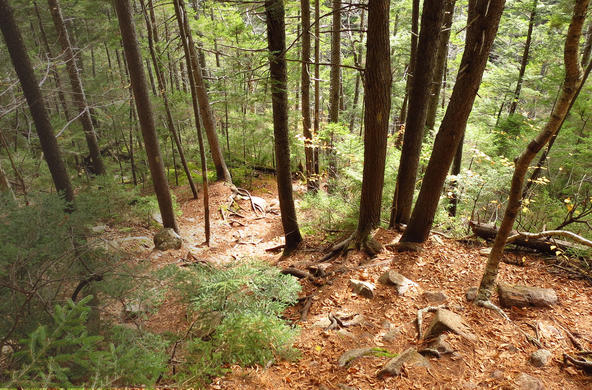We often forget that some of today's obvious and formidable environmental problems were not recognized without tedious long-term studies by dedicated scientists with a hunch. Dave Keeling began to measure the concentration of carbon dioxide in the atmosphere in 1957, but it wasn't until the early 1970s that we heard much about global warming. Gene Likens began to monitor the acidity of rain in New Hampshire in 1963, and Joseph Farman began to monitor the ozone layer over Antarctica in the 1950s.
In the past couple of decades, satellites have been critical to long-term monitoring of the Earth's condition. The Navy got interested in the arctic ice pack in 1970s, but the satellites that now monitor the extent of arctic sea ice began coverage only in the 1980s. Long-term satellite monitoring has recently shown declining concentrations of formaldehyde in the atmosphere over the Houston area, but increases in this gas near the tar-sands operations in Alberta, Canada. These trends are likely related to current levels of activity in the petroleum industry, but they pertain directly to the quality of the air that we breathe in these areas.
Many environmental problems are caused by a slow decline in the conditions that we regard as normal. Often there is considerable year-to-year variation, so that it takes a long-term record to show the trend emerging from the variation. The situation is similar to watching the seashore: one cannot predict whether the tide is rising or falling by looking at a couple of sequential waves; in most places you'll need a record of 10 to 15 minutes to know what's up.
Unfortunately, long-term monitoring studies are not the darlings of the agencies that fund research. They want the immediate discoveries that are typical of medical or engineering research. Environmental scientists can show the immediate effects of toxic pollutants on organisms, but it takes long-term documentation to show that these pollutants are increasing in nature.
Given the current mood in Washington, it seems likely that long-term studies will suffer. We should insist that long-term monitoring programs are maintained and enhanced to record changes in Earth's conditions.
Faith may say that sea-level is not rising, but someday soon, we are likely to find salt water lapping at our heels and our options will have become very limited.
References
Keeling, C. D., S. C. Piper, T. P. Whorf, and R. F. Keeling. 2010. Evolution of natural and anthropogenic fluxes of atmospheric CO2 from 1957 to 2003. Tellus B 63: 1–22.
Lovett, G.M. and 8 others. 2007. Who needs environmental monitoring? Frontiers of Ecology and Environment 5: 253-260.
McLaren, A.S., J.E. Walsh, R.H. Bourke, R.L. Weaver, and W. Wittmann. 1992. Variability in sea-ice thickness over the North Pole from 1977 to 1990. Nature 358: 224-226.
Tetzlaff, D., S.K. Carey, J.P. McNamara, H. Laudon, and C. Soulsby. 2017. The essential value of long-term experimental data for hydrology and water management. Water Resources Research doi: 10.1002/2017WR020838.
Zhu, L., and 5 others. 2017. Long-term (2005-2014) trends in formaldehyde (HCHO) columns across North America as seen by the OMI satellite instrument: Evidence of changing emissions of volatile organic compounds. Geophysical Research Letters 44: 7079-7086.






